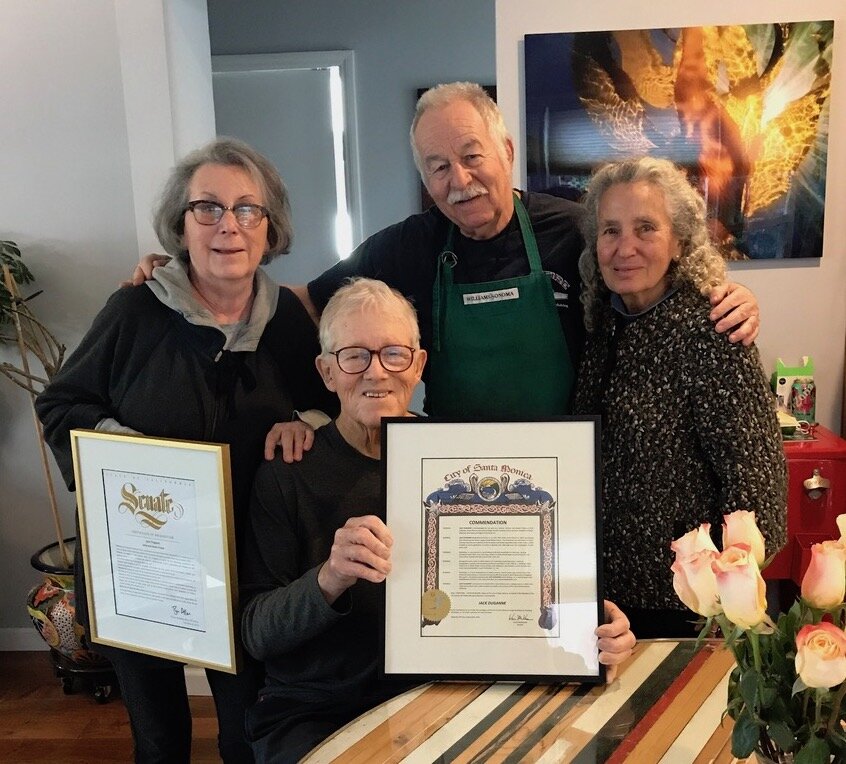Councilwoman Nithya Raman, artist Sandy Belifer, lead conservator Kiernan Graves
photo by Gary Leonard
Now approaching 50 years old, my Can of Cardines mural in Encino has been fully restored and rededicated. That the painted areas survived this long was no doubt due to power washing the wall surfaces before the original painting in 1975, thanks to the Encino Fire Department at the request of then City Councilman, Marvin Braude. This time, in preparation of sealing the entire wall, the City’s Graffiti Control Systems came out in the middle of the night to pressure wash the wall surrounding the painting.
photo by Gary Leonard
While the painting of the cars was still intact and protected by Vandalgard, the “key” and its shadow, which extend into the lower area, was completely painted out by city crews over-painting of graffiti Had the lower area also been previously sealed, it could have been reclaimed. We are fortunate that Site and Studio Conservation and a crew of trained conservators were able to remove deeply embedded graffiti, reconstruct the lost painting of the key and its shadow from photographs, and see to the maximum protection of a final sealant.
This was one of Los Angeles’ first murals under Citywide Murals, and since then this bold public art form has come to define many areas of Los Angeles, its residents, local history and culture, and pure artistic expression. Today, much of LA street art has become iconic and cherished, yet no consideration has been given to issues of proactive surface preparation, best practices in painting and quality of materials, protective sealants, interim maintenance, and restoration. Unfortunately, we have lost many excellent murals like the ones downtown that were painted for the last Olympics we hosted in 1984.
The City needs to view these public-facing artworks with the same seriousness offered to art that hangs in museums. We need an entity to function like the Los Angeles Conservancy does to protect historic architecture and neighborhoods by creating a data base, establishing guidelines and best practices as well as being a watch dog for the vulnerability of art subjected to weather and vandalism. Today, universities and local programs like Inner Resources Mural Conservation Apprenticeship Project are training the next generation of mural conservators. The science and technology of mural preservation is advancing. We need the institutional and financial support for this important work that should be performed by professionals.











































